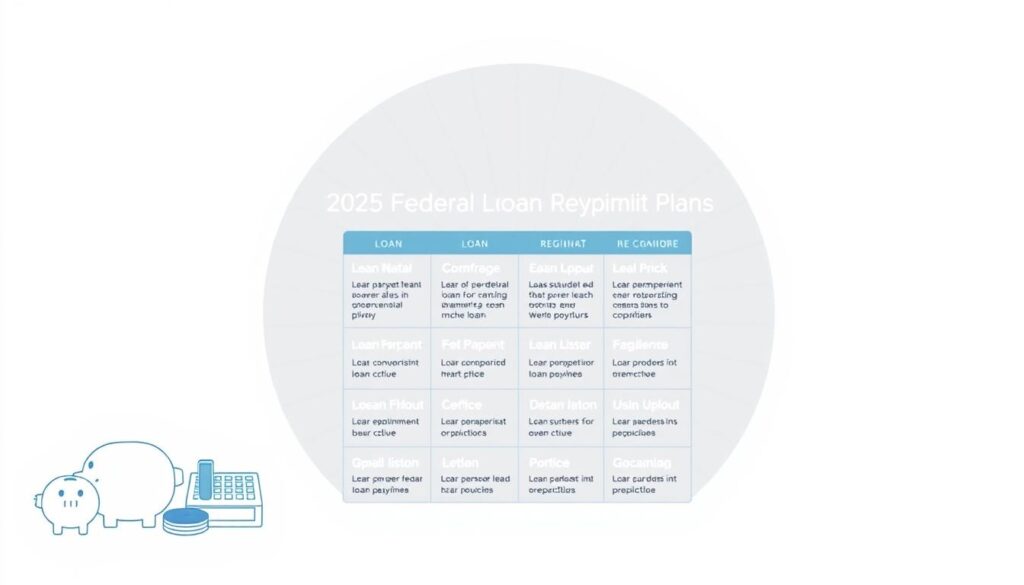2025 Federal government Student Loan Guide: What You Need to Know
Navigating the complexities of student loan options can be daunting, especially for Nigerian students seeking financial assistance for their education.
The 2025 guide to federal government student loans is designed to provide a comprehensive overview of the available options, eligibility criteria, and application processes.
This guide will walk you through the essential aspects of securing a student loan, ensuring that you are well-equipped to make informed decisions about your educational financing.
Key Takeaways
- Understanding the eligibility criteria for federal government student loans
- Exploring the different types of student loans available
- Learning how to apply for a student loan
- Discovering the benefits and repayment options
- Managing your student loan effectively
Understanding Federal Government Student Loans in 2025
Understanding the intricacies of federal government student loans is crucial for Nigerian students planning to study abroad in 2025. The landscape of student loans is constantly evolving, with changes in policies and regulations that can significantly impact borrowers. In this section, we will explore the key updates for 2025 and how these loans work for Nigerian students.
Key Changes and Updates for 2025
The year 2025 brings significant updates to federal government student loans, with a focus on enhancing federal student aid. One of the major changes is the adjustment in interest rates, which affects the overall cost of borrowing. Additionally, there are updates to the loan forgiveness programs and repayment plans, making it essential for borrowers to stay informed.
Student loan updates 2025 include revisions to the income-driven repayment plans, which could benefit Nigerian students by potentially lowering their monthly payments. It’s crucial for students to understand these changes to make informed decisions about their financial aid.
How Federal Student Loans Work for Nigerian Students
Nigerian students seeking to study abroad can benefit from federal government student loans, but they must navigate the application process and understand the terms and conditions. To be eligible, students typically need to be enrolled in a U.S. school that participates in the federal student aid programs.
The process involves completing the Free Application for Federal Student Aid (FAFSA), which determines the student’s eligibility for federal, state, and institutional aid. Nigerian students must also meet specific requirements, such as having a valid Social Security number or an Individual Taxpayer Identification Number (ITIN).
- Complete the FAFSA application.
- Meet the eligibility criteria for federal student aid.
- Understand the loan terms, including interest rates and repayment options.
Types of Federal Government Student Loans Available in 2025
For Nigerian students, understanding the array of federal government student loans available in 2025 is crucial for making informed financial decisions. The federal government offers a variety of loan options to cater to different financial needs and circumstances, ensuring that students can pursue their educational goals without significant financial burdens.
The primary types of federal student loans available include Direct Subsidized Loans, Direct Unsubsidized Loans, PLUS Loans, and Consolidation Loans. Each of these loan types has distinct features and benefits, designed to meet the diverse needs of students.
Direct Subsidized Loans
Direct Subsidized Loans are a type of federal student loan where the government pays the interest on the loan while the student is in school at least half-time, during the grace period, and during deferment periods. These loans are need-based, meaning that eligibility is determined by the student’s financial need.
Key Benefits: The government covers interest during school and deferment periods, reducing the financial burden on students.
Direct Unsubsidized Loans
Direct Unsubsidized Loans are available to both undergraduate and graduate students, and eligibility is not based on financial need. Interest on these loans begins accruing immediately, and students are responsible for paying the interest.
Key Considerations: While these loans offer more flexibility in terms of eligibility, students must be aware of the accumulating interest and plan accordingly.
PLUS Loans
PLUS Loans are designed for graduate or professional students and parents of dependent undergraduate students. These loans require a credit check and have a higher interest rate compared to Direct Subsidized and Unsubsidized Loans.
Key Features: Higher borrowing limits make PLUS Loans an option for those needing additional funding.
Consolidation Loans
Consolidation Loans allow students to combine multiple federal student loans into a single loan with a fixed interest rate. This simplifies repayment and can potentially lower monthly payments.
Benefits: Simplifies loan repayment by consolidating multiple loans into one.
| Loan Type | Eligibility | Interest Payment | Key Benefits |
|---|---|---|---|
| Direct Subsidized Loans | Need-based | Government pays during school | Reduced financial burden |
| Direct Unsubsidized Loans | Not need-based | Student pays from start | Flexible eligibility |
| PLUS Loans | Credit check required | Interest accrues immediately | Higher borrowing limits |
| Consolidation Loans | Existing federal loan holders | Varies by consolidated loan | Simplified repayment |
Eligibility Requirements for Nigerian Students
Understanding the eligibility requirements is crucial for Nigerian students seeking federal government student loans in 2025. The eligibility criteria are designed to ensure that the loans are awarded to students who are most in need and have the potential to benefit from the financial assistance.
Basic Eligibility Criteria
To be eligible for federal government student loans, Nigerian students must meet certain basic criteria. These include being a citizen of Nigeria, being enrolled or accepted for enrollment in a degree-granting program, and maintaining satisfactory academic progress. Students must also have a valid U.S. federal student aid ID and comply with the Selective Service System registration requirements if applicable.
Academic Requirements
The academic requirements for eligibility are centered around the student’s ability to maintain satisfactory academic progress. This involves achieving and maintaining a minimum GPA, completing a certain percentage of courses attempted, and not exceeding a maximum timeframe for completing their degree. Institutions may have specific academic requirements that students must adhere to in order to remain eligible for the loan.
Financial Need Assessment
A key component of the eligibility criteria is the assessment of financial need. This involves evaluating the student’s financial situation to determine their ability to contribute to their education expenses. The financial need assessment takes into account various factors, including income, assets, and other financial obligations. The assessment helps in determining the amount of loan the student is eligible for.
Nigerian-Specific Eligibility Considerations
Nigerian students have specific considerations that may affect their eligibility. These include exchange rate implications, as the loan is in U.S. dollars, and the potential for additional documentation requirements due to being international students. Understanding these considerations is crucial for Nigerian students to navigate the eligibility process effectively.
Step-by-Step Application Process
The journey to securing a federal student loan involves several key steps that Nigerian students must understand and complete accurately. This process, while detailed, is designed to ensure that students receive the financial aid they need to pursue their educational goals.
Creating Your Federal Student Aid Account
To begin the application process, Nigerian students must first create a Federal Student Aid (FSA) account on the official FSA website. This account is crucial as it provides access to the online application portal and other resources necessary for managing your loan.
Steps to Create an FSA Account:
- Visit the Federal Student Aid website and select “Create an FSA ID.”
- Provide required personal details, including your name, date of birth, and Social Security number or Individual Taxpayer Identification Number (ITIN).
- Choose a username and password, and set up security questions.
It’s essential to keep your FSA ID secure, as it will be used throughout the application process and beyond.
Completing the Application Form
With your FSA account in place, the next step is to complete the Free Application for Federal Student Aid (FAFSA). This form is used to determine your eligibility for federal, state, and institutional financial aid.
Tips for Completing the FAFSA:
- Have your financial documents ready, including tax returns and income records.
- List the schools you’re applying to, using their federal school codes.
- Report your income and assets accurately.
Common Application Mistakes to Avoid
Nigerian students should be aware of common pitfalls when completing the FAFSA, such as incorrect Social Security numbers or ITIN, and inaccurate income reporting. Ensuring the accuracy of the information provided is crucial for a smooth application process.
Required Documentation for Nigerian Students
Nigerian students will need to provide additional documentation to support their FAFSA application. This may include proof of income, tax documents, and identification. It’s advisable to check with the financial aid office of the intended institution for specific requirements.
Application Deadlines and Timeline
Understanding the application deadlines is vital. While the federal deadline is typically June 30th, individual schools and states may have earlier deadlines. Nigerian students should check with their intended institutions to ensure they meet all relevant deadlines.
Tracking Your Application Status
After submitting the FAFSA, students can track their application status online using their FSA ID. This allows them to monitor the progress of their application and address any issues promptly.
Understanding Loan Terms and Conditions
Federal government student loans for 2025 come with specific terms and conditions that Nigerian students must comprehend to manage their financial obligations effectively. Understanding these terms is crucial for making informed decisions about borrowing.
Interest Rates for 2025
The interest rates for federal student loans in 2025 are a critical factor in determining the total cost of borrowing. Interest rates can vary based on the type of loan and the borrower’s status. For instance, Direct Subsidized and Unsubsidized Loans have different interest rates. It’s essential to check the latest rates announced by the U.S. Department of Education.
Loan Fees and Disbursement
Loan fees are another important consideration. Origination fees are deducted from the loan amount before disbursement. Understanding how these fees are calculated and how they impact the total loan amount is vital. Disbursement processes also vary, with funds typically being disbursed directly to the educational institution.
Loan Limits and Borrowing Constraints
There are limits to how much a student can borrow. Loan limits vary by academic year and dependency status. Understanding these limits is crucial for planning educational expenses. Additionally, borrowing constraints, such as aggregate loan limits, must be considered to avoid over-borrowing.
Grace Periods and Deferment Options
Grace periods and deferment options provide flexibility for borrowers. Grace periods allow borrowers a certain period after graduation before they must start repaying their loans. Deferment options can temporarily suspend payments under specific circumstances, such as returning to school or unemployment.
| Loan Type | Grace Period | Deferment Options |
|---|---|---|
| Direct Subsidized Loans | 6 months | In-school, unemployment |
| Direct Unsubsidized Loans | 6 months | In-school, unemployment |
| PLUS Loans | No grace period | In-school, unemployment |
By understanding these aspects of loan terms and conditions, Nigerian students can better navigate the complexities of federal government student loans for 2025.
Federal Government Student Loan 2025 Repayment Plans
Understanding the various repayment plans available for federal government student loans in 2025 is crucial for Nigerian students to manage their debt effectively. The repayment plans are designed to accommodate different financial situations, ensuring that borrowers can repay their loans without undue hardship.
Standard Repayment Plan
The Standard Repayment Plan is the default repayment plan for federal government student loans. It involves fixed monthly payments over a set period, usually up to 10 years. This plan is beneficial for borrowers who can afford the monthly payments, as it allows for quicker repayment and less interest paid overall.
Graduated Repayment Plan
The Graduated Repayment Plan starts with lower monthly payments that gradually increase, usually every two years, over a repayment period of up to 10 years. This plan is suitable for borrowers who expect their income to increase over time.
Income-Driven Repayment Plans
Income-Driven Repayment (IDR) Plans adjust the monthly payment amount based on the borrower’s income and family size. There are several types of IDR plans, including Income-Based Repayment (IBR) and Pay As You Earn (PAYE). These plans are ideal for borrowers with high debt relative to their income.
Calculating Your Monthly Payments
To determine the monthly payment under an IDR plan, borrowers need to provide information about their income and family size. The payment amount is typically a percentage of their discretionary income.
Extended Repayment Options
Extended Repayment Options allow borrowers to extend their repayment period beyond the standard 10 years, potentially up to 25 years. This can lower the monthly payment amount but may result in paying more interest over the life of the loan.
Choosing the Right Repayment Plan for Your Situation
Selecting the most appropriate repayment plan depends on several factors, including financial situation, income expectations, and debt amount. Borrowers should consider their ability to make monthly payments and the total interest paid over the loan’s lifetime when choosing a plan.
Loan Forgiveness and Discharge Programs
Understanding loan forgiveness options is vital for students to manage their debt effectively. The federal government offers several programs designed to help borrowers manage or eliminate their student loan debt under certain conditions.
Public Service Loan Forgiveness
The Public Service Loan Forgiveness (PSLF) program is designed for borrowers who work in public service jobs, including government, non-profit, and certain other public service positions. To qualify, borrowers must make 120 qualifying monthly payments while working full-time in a public service job. It’s crucial to ensure that your loan and employment qualify before applying.
Some key aspects of PSLF include:
- Making 120 qualifying payments
- Working full-time in a public service job
- Having a Direct Loan or consolidating other loans into a Direct Consolidation Loan
Teacher Loan Forgiveness
Teacher Loan Forgiveness is another program designed to help educators manage their debt. Teachers who work in low-income schools or in subject areas with a high need for qualified teachers may be eligible for loan forgiveness. The amount of forgiveness varies based on the subject taught and the school’s income status.
Key requirements for Teacher Loan Forgiveness include:
- Teaching full-time for five consecutive years
- Working in a low-income school or a subject area with a high need for qualified teachers
- Having a Direct Loan or a Federal Stafford Loan
Disability Discharge and Other Discharge Options
For borrowers who become totally and permanently disabled, a Total and Permanent Disability Discharge may be an option. This discharge eliminates the borrower’s obligation to repay their federal student loans. Other discharge options may be available due to school closure, false certification, or unpaid refunds.
“Borrowers should be aware of the various discharge options available to them, as these can provide significant relief from debt obligations.”
To apply for a disability discharge, borrowers must provide documentation from a physician certifying their disability. The application process involves submitting the appropriate forms and supporting documentation to the loan servicer.
Managing Your Student Loan Debt Effectively
Understanding the intricacies of student loan debt management can make a significant difference in a student’s financial future. As Nigerian students navigate the complexities of U.S. federal student loans, having a clear strategy for managing debt is crucial.
Creating a Repayment Strategy
Developing a repayment strategy is the first step towards effective student loan debt management. This involves understanding the types of loans you have, their interest rates, and the various repayment options available. Consolidation can simplify payments, while income-driven repayment plans can make monthly payments more manageable.
To create an effective repayment strategy, consider the following steps:
- List all your loans, including their balances and interest rates.
- Determine your monthly payment capacity.
- Explore repayment options such as income-driven repayment plans.
- Consider consolidating loans for simplified payments.
Avoiding Default and Its Consequences
Avoiding default is critical, as it can have severe consequences on your credit score and financial stability. Defaulting on a federal student loan can lead to wage garnishment, loss of tax refunds, and ineligibility for further federal student aid. Communicating with your loan servicer can provide alternatives to default, such as deferment or forbearance.
“Defaulting on a student loan can have long-lasting effects on your financial health. It’s essential to explore all available options to avoid this outcome.” –
Tools and Resources for Loan Management
Several tools and resources are available to help manage student loan debt. Online platforms and mobile apps can track your loans, provide repayment calculators, and offer personalized advice. The National Student Loan Data System (NSLDS) is a valuable resource for understanding your loan details.
| Tool/Resource | Description | Benefit |
|---|---|---|
| NSLDS | National Student Loan Data System | Provides detailed information on your federal student loans. |
| Loan Repayment Calculators | Online tools for calculating repayment amounts. | Helps in planning monthly payments. |
| Student Loan Apps | Mobile applications for tracking loans. | Offers personalized advice and reminders. |
By creating a repayment strategy, avoiding default, and utilizing available tools and resources, Nigerian students can effectively manage their U.S. federal student loan debt and achieve financial stability.
Navigating Nigerian Educational System with U.S. Federal Loans
The Nigerian educational system presents unique challenges for students relying on U.S. federal loans, requiring careful planning and management. As the Nigerian educational landscape continues to evolve, students must be aware of the intricacies involved in utilizing foreign financial aid.
Exchange Rate Implications and Management
One of the significant challenges faced by Nigerian students using U.S. federal loans is managing exchange rate fluctuations. The value of the loan in Naira can vary significantly due to exchange rate volatility.
Key considerations for managing exchange rate implications include:
- Understanding the current exchange rate and its impact on your loan amount
- Exploring financial instruments or services that can help mitigate exchange rate risks
- Regularly reviewing and adjusting your financial plan to accommodate exchange rate changes
| Year | USD to NGN Exchange Rate | Impact on Loan Value |
|---|---|---|
| 2022 | 415 | ₦415 per $1 |
| 2023 | 460 | ₦460 per $1 |
| 2024 | 520 | ₦520 per $1 |
Nigerian-Specific Scholarship Opportunities
In addition to U.S. federal loans, Nigerian students can explore scholarship opportunities specific to Nigeria. These scholarships can be merit-based, need-based, or targeted towards specific fields of study.
Some notable scholarship programs for Nigerian students include:
- The Nigerian Government’s Scholarship Programs
- Private organization scholarships, such as those offered by multinational corporations operating in Nigeria
- International scholarships that are open to Nigerian students
Combining Federal Loans with Nigerian Education Funding
Nigerian students can combine U.S. federal loans with other funding sources available in Nigeria to support their education. This can include government funding, private scholarships, and family contributions.
Strategies for combining funding sources:
- Identifying all potential funding sources
- Creating a comprehensive financial plan that incorporates multiple funding streams
- Prioritizing funding sources based on terms and conditions
Banking and Transfer Considerations
When using U.S. federal loans to study in Nigeria, students must consider the banking and transfer implications. This includes understanding the fees associated with international money transfers and the most efficient ways to receive and manage funds.
Key banking considerations:
- Choosing a bank with low transfer fees
- Understanding the transfer process and timelines
- Exploring options for receiving funds directly in Naira
Common Mistakes to Avoid with Federal Student Loans
Understanding the nuances of federal student loans is crucial for Nigerian students to avoid common mistakes. Federal student loans can be a valuable resource for financing education, but navigating the process requires careful attention to detail.
Application Errors
One of the initial pitfalls Nigerian students may encounter is application errors. Inaccurate or incomplete information on the application form can lead to delays or even rejection. It’s essential to ensure that all details are correct and that the application is thoroughly reviewed before submission.
Common application errors include incorrect personal details, inaccurate financial information, and failure to sign the application. To avoid these mistakes, students should carefully review the application form and seek assistance if needed.
Misunderstanding Loan Terms
Misunderstanding the terms of federal student loans is another common mistake. Nigerian students should be aware of the interest rates, repayment terms, and any associated fees. Failing to understand these terms can lead to unexpected financial burdens.
It’s crucial for students to read and comprehend the loan agreement before signing. They should also be aware of the grace period and the options available for deferment or forbearance.
Repayment Planning Mistakes
Repayment planning mistakes can lead to financial difficulties. Nigerian students should develop a repayment strategy that aligns with their financial situation. Choosing the wrong repayment plan can result in higher monthly payments or extended repayment periods.
Students should explore different repayment options, such as income-driven repayment plans, and select the one that best suits their needs. It’s also important to stay informed about any changes to repayment policies.
Communication and Documentation Errors
Effective communication with loan servicers and maintaining accurate documentation are vital. Nigerian students should keep their loan servicer informed about any changes in their contact information or financial situation.
Failing to provide required documentation or respond to servicer inquiries can lead to issues with loan disbursement or repayment. Students should keep detailed records of their loan documents and communications.
Conclusion
Nigerian students seeking financial assistance for higher education can benefit from the federal government student loan programs available in 2025. This guide has outlined the key aspects of these loans, including eligibility criteria, application processes, loan terms, and repayment options.
Understanding the different types of federal government student loans, such as Direct Subsidized and Unsubsidized Loans, PLUS Loans, and Consolidation Loans, is crucial for making informed decisions. Nigerian students must meet specific eligibility requirements, including academic performance and financial need assessments.
The application process involves creating a Federal Student Aid account, completing the application form, and submitting required documentation. It’s essential to be aware of application deadlines and to track the application status.
In conclusion, federal government student loans in 2025 offer Nigerian students a viable option for financing their education. By grasping the loan terms, repayment plans, and available forgiveness programs, students can effectively manage their debt and achieve their academic goals.
















Post Comment